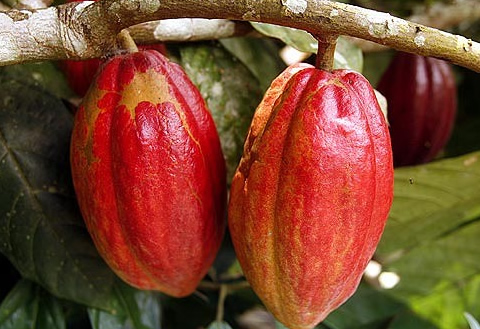
More than 23,000 victims of the flood caused by the Akosombo dam spillage are to benefit from a relief package by the Ministry of Food and Agriculture under the Planting for Food and Job Phase II project.
The Minister for Agric Bryan Acheampong said so far, about 13,000 affected flood victims have been provided with rice seeds, onion seeds, pepper and tomatoes seed as well as fertilisers.
Handing over some ESRF infrastructure Projects and Food Processing Equipment to beneficiary communities throughout the country at Tordzinu in the Volta Region, the Agric Minister, said the event is an expression of government’s efforts to empower smallholder farmers.
According to the Minister, the first initiated groundbreaking works in Kwasi Fante, Afram Plains South District of the Eastern Region, unveiled a spectrum of transformative projects aimed at revitalizing farming communities across the nation under the Emergency Support to Rural Livelihoods and Food Systems exposed to COVID-19 (ESRF) Project.
He added the ESRF project was conceived in response to the unprecedented challenges posed by the 2020 Global Pandemic and in recent time the Akosombo dam spillage affecting some communities.
“Our goal was to safeguard the livelihoods, incomes, health, and resilience of our target groups against the impacts of COVID-19 and climate change. The project is funded by the Government of Ghana through a loan from the International Fund for Agricultural Development (IFAD)”.
Furthermore “Considering this reality, the Government of H.E Nana Addo Dankwa Akufo-Addo continues to prioritize agriculture and demonstrate a firm commitment to the improvement of the sector. This became evident within the first seven months of my stewardship at the Ministry of Food and Agriculture, when the President launched Phase II of the Planting for Food and Jobs campaign at Tamale, Northern Region. That action by the President, signaled the dawn of a new era of Ghana’s Agriculture, after a period of decline and uncertainty”.
The Minister said, launch of the PFJ. 2.0 also underscored a new sense of urgency in the government’s approach to tackling the problems of the agricultural sector.
The short-term goal is to achieve self-sufficiency in major staple crops such as rice, maize, soybean, cassava, yam, plantain, tomato, pepper, onion, and poultry.
The Ministry said it will ensure that all projects, including ESRF, are aligned with the medium-to-long-term goals of the PFJ 2.0 program, including aligning their equipment support for processing these staple crops.
Farmers Onboarded and Inputs distributed so far:
- Total number of farmers registered on the GhAAP to date- 428,641
Distribution to Flood Victims Target
– Total flood victims 23,409
– Total number of flood victims served so far 13,000
– Total NPK (50kg) distributed 78,000
– Total Urea (50kg) distributed 26,000
– Total Rice seeds distributed (kg) 180,146
– Total Maize seeds distributed (kg) 132,000
– Total Pepper seeds distributed (g) 190,000
– Total Onion seeds distributed (g) 120,002
– Weedicides distributed (Litres) 40,354
Distribution to Vulnerable Farmers through MPs, MMDCEs
– Total vulnerable farmers 250,000
– Total NPK (50kg) distributed 538,298
– Total Urea (50kg) distributed 244,649
– Total Maize seeds distributed (kg) 2,446,490
– Total Rice seeds distributed (kg) 1,957,192
Distribution of inputs to flood-affected and vulnerable farmers is ongoing until the end of the cropping season.
Poultry Intensification Scheme (PIS)
The Ministry of Food and Agriculture (MoFA) is rolling out a Poultry Intensification Scheme (PIS) which targets the production, processing, and marketing of 2 million broilers this year, with a funding envelope of USD12.5m.
So far, 22 anchor farmers have been selected for the intervention. The intervention has commenced with three (3) farmers who have taken delivery of their DOCs. All others would start as and when their hatcheries are ready.
The PIS provides input credit to farmers as follows;
1. Day Old Chicks (DOCs)
2. 4.5 kg of feed per bird (enough to feed the bird for 8 weeks)
3. Full dosage of vaccines for protection of the DOCs
The innovation that FSRP-MoFA brings on board is that it would include anchor farmers producing processed whole birds or processed cut parts. It would also provide matching grants to beneficiaries for processing and marketing facilities and capacity building in Climate Smart Agriculture (CSA) technologies and Good Agricultural Practices.
This intervention would contribute to MoFA’s overall target for improvement of the poultry sector under the Planting for Food and Jobs (PFJ 2.0).
The infrastructure projects being handed over include:
1. Farm Tracks: constructed 33.5 km farm tracks in different regions, including:
• Tordzinu-Gowenu-Dorkploame (8km) for small holder farmers, here in the South Tongu District (Volta Region)
• Warehouse-Obomeng (12 km) for smallholder farmers in the Afram Plains South District (Eastern Region)
• Nyemati-Kunkorgu and Gwollu-Paana (13.5 km) for smallholder farmers in the Sissala West District (Upper West Region)
2. Water Harvesting Schemes: constructed 200 ha water harvesting schemes for smallholder farmers:
• 100 ha water harvesting scheme for smallholder farmers, here, at Tordzinu in the South Tongu District (Volta Region)
• 100 ha water harvesting scheme for smallholder farmers at Klenormadi in the Ketu North District (Volta Region)
3. Boreholes: drilled 51 boreholes in different regions:
• 10 boreholes in the North East Gonja, Nanton, and Atebubu districts of the Savannah, Bono East, and Northern regions
• 10 boreholes in the Afram Plains South District of Eastern Region
• 11 boreholes in Kwahu East District of Eastern Region
• 10 boreholes in Asante Akim North and Afigya Kwabere North Districts
• 10 boreholes in Sekyere South and Ejura districts of the Ashanti Region
4. Drying Platforms: constructed 47 drying platforms for smallholder farmers:
• 13 drying platforms here at Tordzinu in South Tongu District
• 13 drying platforms at Klenormadi in Ketu North District
• 11 drying platforms at Ayensu River and Aduhima in Gomoa East and Kwahu East districts
• 10 drying platforms at Asutuare in the Shai Osudoku District of the Greater Accra Region
These infrastructural projects according to the Ministry, will improve access to market centers for our farmers and boost their productivity by facilitating the smooth transportation of their agricultural produce.
The Minister also said ESRF supported 229 Processing Groups and individual smallholder farmers, particularly women and youth groups with livelihood equipment costing over 1.72 million USD.
The post Akosombo dam spillage: Emergency support project for farmers hit by flood established first appeared on 3News.
Read Full Story














Facebook
Twitter
Pinterest
Instagram
Google+
YouTube
LinkedIn
RSS